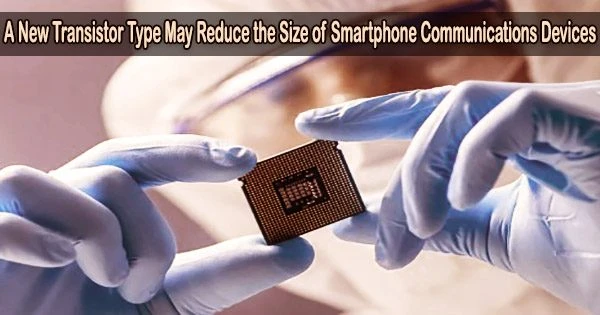A team at the University of Michigan has demonstrated a reconfigurable transistor utilizing a ferroelectric semiconductor that was previously announced to be as thin as needed for contemporary computing components.
The study is a featured article in Applied Physics Letters.
“By realizing this new type of transistor, it opens up the possibility for integrating multifunctional devices, such as reconfigurable transistors, filters, and resonators, on the same platform all while operating at very high frequency and high power,” said Zetian Mi, U-M professor of electrical and computer engineering who led the research, “That’s a game changer for many applications.”
At its most basic level, a transistor is a type of switch that either allows or blocks the passage of an electric current. The one demonstrated at Michigan is known as a ferroelectric high electron mobility transistor (FeHEMT) a twist on the HEMTs that can increase the signal, known as gain, as well as offering high switching speed and low noise. They are therefore excellent signal amplifiers for sending fast signals to Wi-Fi routers and mobile towers.
Ferroelectric semiconductors are distinctive from other types because they can maintain an electrical polarization, which is the equivalent of magnetism on an electrical level. They can, however, change which end is positive and which is negative, unlike a fridge magnet. This ability gives a transistor more versatility because it allows the transistor to alter its behavior.
By adding ferroelectricity to a HEMT, we can make the switching sharper. This could enable much lower power consumption in addition to high gain, making for much more efficient devices.
Ping Wang
“We can make our ferroelectric HEMT reconfigurable,” said Ding Wang, a research scientist in electrical and computer engineering and first author of the study. “That means it can function as several devices, such as one amplifier working as several amplifiers that we can dynamically control. This allows us to reduce the circuit area and lower the cost as well as the energy consumption.”
Reconfigurable radio frequency and microwave transmission, as well as memory components in next-generation electronics and computing systems, are areas of great interest for this technology.
“By adding ferroelectricity to a HEMT, we can make the switching sharper. This could enable much lower power consumption in addition to high gain, making for much more efficient devices,” said Ping Wang, a research scientist in electrical and computer engineering and also the co-corresponding author of the research.
Aluminum nitride spiked with scandium, a metal occasionally used to reinforce aluminum, is what makes up the ferroelectric semiconductor, which is employed in fighter jets and high-performance bicycles.
Since it is the first ferroelectric semiconductor based on nitride, gallium nitride, the next-generation semiconductor, can be merged with it.
Gallium nitride semiconductors compete with silicon as the preferred material for electronic devices, offering speeds up to 100 times that of silicon, excellent efficiency, and low cost.
“This is a pivotal step toward integrating nitride ferroelectrics with mainstream electronics,” Mi said.
The new transistor was grown using molecular beam epitaxy, the same approach used to make semiconductor crystals that drive the lasers in CD and DVD players.
The University of Michigan has applied for patent protection. The Office of Naval Research and the Blue Sky Initiative at the U-M College of Engineering funded early work leading to this study.
The device was built in the Lurie Nanofabrication Facility and studied at the Michigan Center for Materials Characterization.





